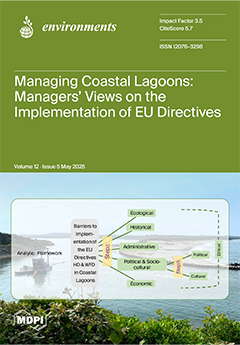Improving the aqueous solubility of poorly soluble pharmaceuticals is essential for accurate pharmacotoxicological testing, but the biological safety of solubilizers and hydrotropic agents used for this purpose requires careful evaluation. This study assessed the acute toxicity, physiological parameters (heart rate, claw and appendage movement), behavioral responses (swimming speed), and embryotoxicity of 15 commonly used solubilizers and hydrotropes using
Daphnia magna as a biological model. Compounds included surfactants (polysorbate 20 (Tween 20), polysorbate 80 (Tween 80), sodium lauryl sulfate (SLS)), sulfonated hydrotropes (sodium xylene sulfonate (SXS), sodium benzenesulfonate (SBS), sodium p-toluenesulfonate (PTS), sodium 1,3-benzenedisulfonate (SBDS)), and solubilizing solvents (dimethyl sulfoxide (DMSO), glycerol (GLY), propylene glycol (PDO), dimethylformamide (DMF), N,N’-Dimethylbenzamide (DMBA), N,N-Diethylnicotinamide (DENA), N,N-Dimethylurea (DMU), urea). Acute lethality was evaluated across concentration ranges appropriate to each compound group (e.g., 0.0005–0.125% for surfactants; up to 5% for less toxic solvents). Surfactants exhibited extreme toxicity, with Tween 20 and SLS causing 100% lethality even at 0.0005%, while Tween 80 induced 40–50% lethality at that concentration. In contrast, DMSO, GLY, and PDO showed low acute toxicity, maintaining normal heart rate (202–395 bpm), claw and appendage movement, and swimming speed at ≤1%, though embryotoxicity became evident at higher concentrations (≥1–2%). SXS, SBS, PTS, and SBDS displayed clear dose-dependent toxicity but were generally tolerated up to 0.05%. DMBA, DENA, and DMU caused physiological suppression, including reduced heart rate (e.g., DMBA: 246 bpm vs. control 315 bpm) and impaired mobility. Behavioral assays revealed biphasic effects for DMSO and DMBA, with early stimulation (24 h) followed by inhibition (48 h). Embryotoxicity assays demonstrated significant morphological abnormalities and developmental delays at elevated concentrations, especially for DMSO, GLY, and PDO. Overall, DMSO, GLY, PDO, SXS, and DMF can be safely used at tightly controlled concentrations in
Daphnia magna toxicity assays to ensure accurate screening without solvent-induced artifacts.
Full article





